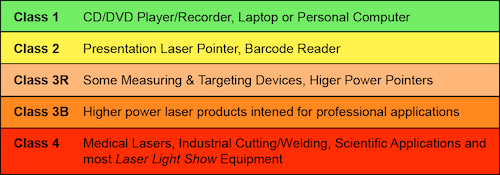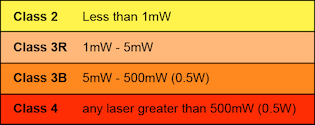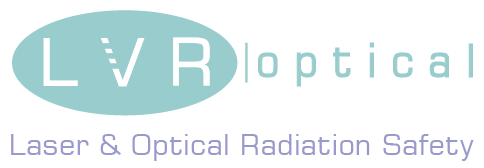
BLOG: Laser Product Classification
 Any product that uses a laser, and is sold or used in the UK or Europe must meet the criteria for CE declaration, which usually mean that the device must show compliancy with the Laser Product Safety Standard EN 60825-1:2014, which has been adopted across all European member states.
Any product that uses a laser, and is sold or used in the UK or Europe must meet the criteria for CE declaration, which usually mean that the device must show compliancy with the Laser Product Safety Standard EN 60825-1:2014, which has been adopted across all European member states.
A laser is a special type of light source that can produce a very intense pencil-thin beam of light containing a lot of light energy. There are many different types of laser devices in use today, being used in a wide range of applications.
Any product that uses a laser device must be classified based on the hazard the device presents to those in the vicinity of it when it is in use. The Laser Product Safety Standard defines eight categories in the classification system, ranging from Class 1, being products that are inherently safe in normal use, through to the most dangerous category, Class 4, which can cause harm to eyesight, damage skin and present a fire hazard.
Some typical laser products/applications and the most common classifications are listed below :

The full list of eight laser safety classifications are defined in the Laser Product Safety Standard, EN 60825-1:2014, which is accepted across Europe, and published in the UK by the British Standards Institute, (BSI).
The idea of considering products with different classifications based on the harm that can be caused is regarded as a sensible way of helping manage risk for end users, while telling manufacturers what minimum safety features must be included in the product. For instance it would be excessive to require that manufacturers put removable keyswitches, interlocks, and emission indicators on a domestic DVD player that would normally be a low-risk Class 1 product.
How the classifications are determined is based upon how much light is accessible, and therefore how bigger the potential to cause harm. The boundaries and specifics for manufacturers to determine the appropriate class are defined in the safety standard EN 60825-1:2014. This standard specifies the classification limits and how the limit shall be determined.
Typical Laser Product Classifications

The full list of eight laser safety classifications are defined in the Laser Product Safety Standard, EN 60825-1:2014, which is accepted across Europe, and published in the UK by the British Standards Institute, (BSI).
Engineering Features
Additionally, the standard defines the safety features that must be included in each particular class. Some of the key safety features that must be included in laser products most commonly used for light show applications are as follows :

The majority of laser products used for light show applications are either Class 3B or Class 4. Both these classes have the ability to cause serious eye injury, with some Class 3B devices able to harm skin too. Class 4 devices have the ability to cause harm to eyes and skin, and may also cause an eye injury from a diffuse reflection, (i.e. that bright dot on the wall!).
Are these classifications the same worldwide? Essentially yes. The IEC laser safety standard (EN 60825-1:2014) is adopted throughout Europe and many other countries across the world. In America the ANSI Z136.1 laser safety standard defines the same classes, with the same references and thresholds, meaning that although the standards are different, there is a harmonised approach to defining and referencing classifications.
Ultimately the purpose of this approach is to allow manufacturers to make laser products that conform to common standards requirements, and have the same minimum safety features implemented. Secondly, for end users, it is intended to create a straightforward and familiar way for them to determine the amount of risk using a product presents, and help decide what safety precautions need to be taken.
The classification system is about to take on a new importance as it will likely be used with forthcoming European Regulation intended at limiting the sales of high power laser products to consumers, which has largely arisen from the misuse of high power laser pointers.
© 2015 LVR Optical
